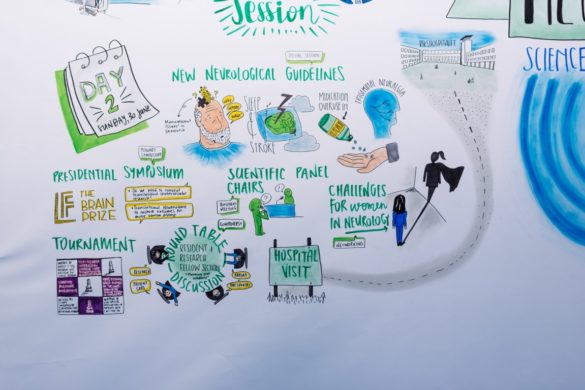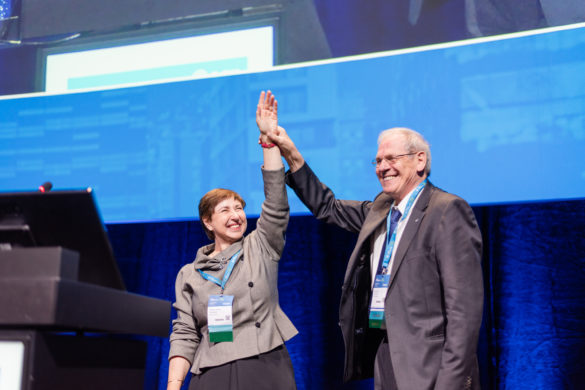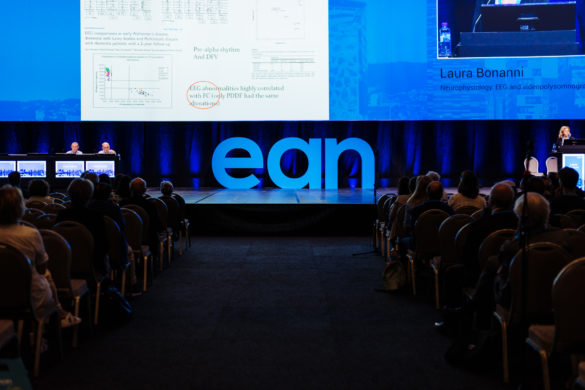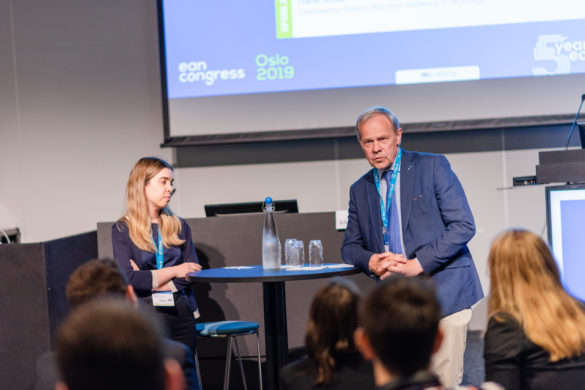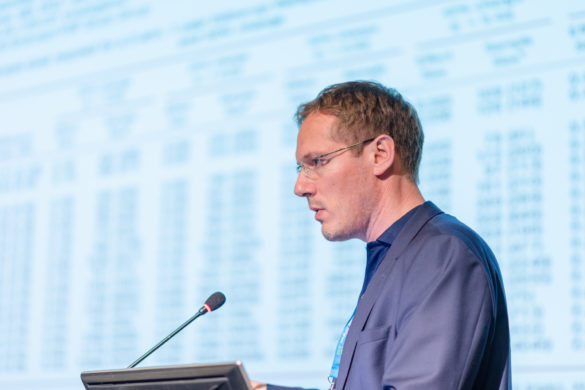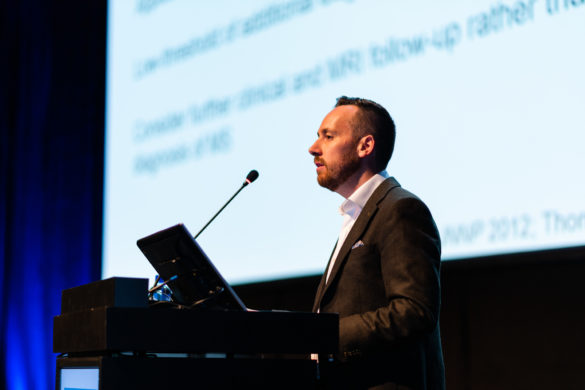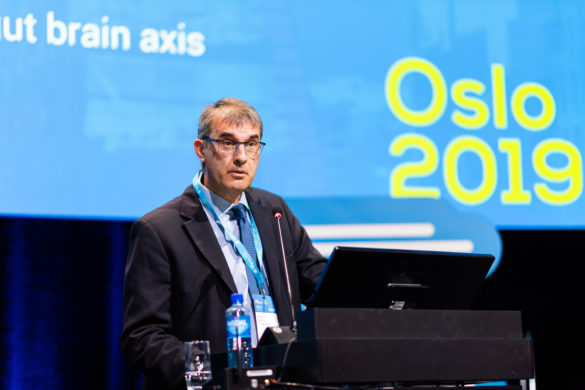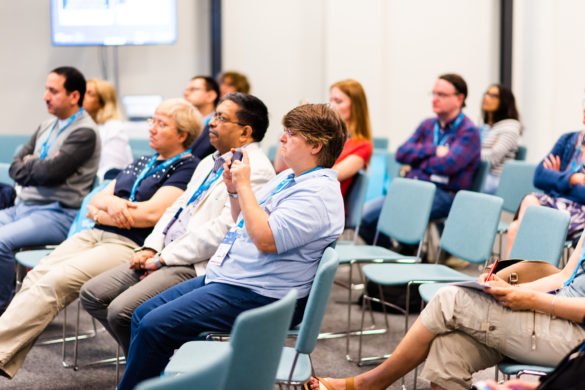Norway is located in the western and northern part of Scandinavia, and it is well known for its beautiful scenery with fjords and waterfalls along the coastline, its mountainous wilderness, and for Arctic regions with northern lights in the winter and midnight sun during the summer. Norway is one of Europe's most sparsely populated countries with 5.2 million people in a land area of 385,802 km2. The most densely populated area is around the city of Oslo in the south-east of the country. Oslo, the Norway’s capital, is the fastest-growing capital in Europe.
Category
EAN Congress news
-
-
EAN NewsEAN Congress news
Oslo 2019: Report on Symposium 8: New Insights/development in Stroke treatment
July 9, 2019Prof. Fischer presented the first lecture on the subject of recanalization in acute stroke with a short review of the current status of acute stroke management and a focused discussion on a great deal of the unanswered questions concering reperfusion therapy, including the safety and contraindications of r-tPA, the risk of symptomatic intracranial hemorrhage, intra-venous thrombolysis for minor strokes, wake-up strokes, extending the time window, the use of alteplase vs. tenecteplase as well as the unaswered questions regarding endovascular treatment, such as extending the time window, basilar occlusion, use in cases with either low NIHSS or low ASPECTS scores. -
This year, at the annual hospital visit of the Resident and Research Fellow Section (RRFS) of the European Academy of Neurology, nearly 80 resident and research fellows visited to the Neurology Department of the Rikshospitalet, organized with the support of Dr. Silje Bjerknes, local resident and PhD candidate.
-
EAN NewsEAN Congress newsFeatured Slider
Oslo 2019: Plenary symposium 4: Highlight Session Report
July 2, 2019The last day of the Congress and time to take stock. Kell Morten Myhr summarised the field of multiple sclerosis (MS), which received 205 abstracts. Professor Myhr started his highlights with papers by Persson et al from Lexington reporting longitudinal observational survival data in MS and Stahmann et al from Hanover who reported variable rates of starting disease-modifying therapy. Professor Myhr considered that these papers together pointed toward a need to start MS therapy early. Prognostic blood biomarkers were then considered with vitamin D shown to predict long-term disability (Wesnes et al, Trondheim), whilst neurofilament light chain was associated with development of cognitive impairment in secondary progressive MS (Kuhle et al, Basel). -
This year’s Networking event during the 5th EAN congress took place at the Oslo City Hall on Monday evening (July 1), where the attendees were impressed by the striking functional architecture and scale of the main hall.
-
We congratulate the winners of the EAN Tournament during the 5th EAN Congress in Oslo. In two sessions, twelve young scientists presented their outstanding work.
-
Resident and Research FellowsEAN Congress newsTop Articles
EAN 2019: RRFS General Assembly
July 2, 2019Oslo hosted the general assembly of the resident and research fellow section (RRFS) of the European Academy of Neurology (EAN) during the 5th annual congress. The assembly received a broad participation from RRFS members who were interested in gaining insight into the annual report as well as the new Treasurer elections. -
Resident and Research FellowsEAN Congress newsTop Articles
Oslo 2019: RRFS Special Session – Round table discussion
July 2, 2019This year’s „Round table discussion” of the EAN Resident and Research Fellow Section (RRFS) was performed for the first time in form of two controversial topics with a “podium” discussion. The discussion was performed in a rather informal and open way between two experts providing a thorough discussion including pro and contra arguments based on individual experience as well as facts, allowing participants to ask questions in general as well as specific to their own situation and request advice. -
This symposium focused on presenting the essential elements of clinical and imaging diagnosis, the diagnostic difficulties and the therapeutic possibilities on progressive supranuclear palsy (PSP).
-
The latest revision of multiple sclerosis (MS) diagnostic criteria (2017 Thompson criteria) have changed the way we diagnose MS and have posed totally new challenges to MS clinical practice.
-
Prof. Bruno Bonaz from Grenoble discussed the role of vagal nerve in the context of the gut-brain axis. It is very well known that the vagal nerve belongs to the parasympathetic nervous system and is a major component of autonomic nervous system. The vagal nerve has a dual role in the anti-inflammatory gut-brain axis with its afferent fibres via the hypothalamic-pituitary-adrenal axis and its efferent fibres via the cholinergic anti-inflammatory pathway.
-
A common and well-defined language/ontology is needed to consistently build and communicate new knowledge. The EEG literature has for many years been confounded by different classification systems hampering progress in the field. Standardized Computer-based Organized Reporting of EEG (SCORE) and the American Clinical Neurophysiology Society’s standardized critical care EEG terminology have established a platform facilitating progress in EEG diagnostics.
-
EAN Congress news
EAN 2019: Focused Workshop 12 – Autologous hematopoietic stem cell transplantation in multiple sclerosis
July 2, 2019Autologous hematopoietic stem cell transplantation (HSCT) is a promising treatment option for multiple sclerosis (MS). The premise of the treatment is that the self-reactive immune response is eradicated by chemotherapy, and that the immune system is "reset" after reinfusion of autologous hematopoietic stem cells, producing an immune system that is less self-reactive. -
Urgent need for new treatment strategies in epilepsy About one third of all epilepsy patients are not seizure free. This has not improved much over the last 50 years despite nearly 30 new antiepileptic drugs. It is therefore an urgent need for new treatment strategies.
-
EAN NewsEAN Congress newsTop ArticlesFeatured Slider
Plenary Symposium 3: Report on plenary symposium – The role of inflammation in “non-inflammatory” neurological diseases,
July 1, 2019This plenary symposium captured the overarching theme of the Congress. Professor Vezzani from Milan began by discussing neuroinflammatory pathways as treatment targets and biomarker candidates in epilepsy. There is evidence for oxidative stress and neuroinflammatory responses in various forms of epilepsy, from animal models and surgical resection specimens, with microglial activation, extravasation of albumin, and upregulation of proinflammatory cytokines, such as interleukin 1-beta.



